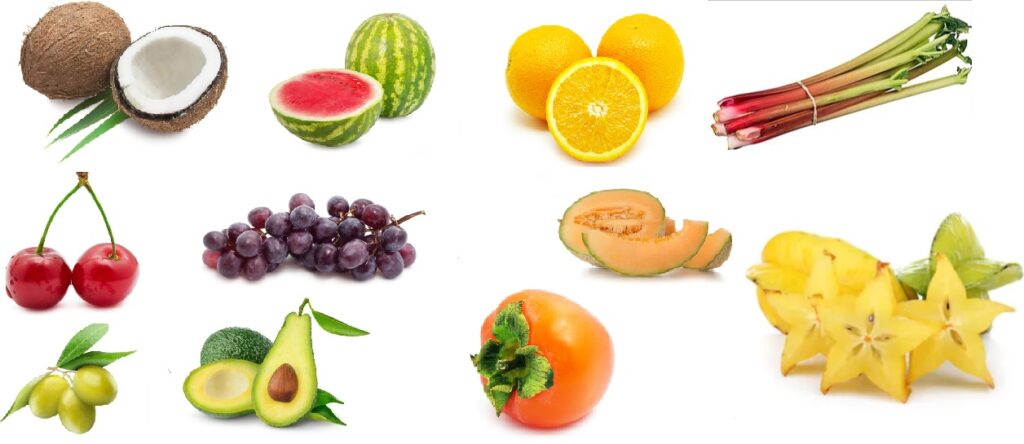The ketogenic diet, or keto diet, is a low-carb, high-fat diet that has gained popularity for its potential weight loss benefits. One of the challenges of following a keto diet is finding suitable fruits to include, as many fruits are high in carbohydrates. However, there are several fruits that are low in carbs and can be enjoyed on a keto diet. In this article, we will explore the best keto-friendly fruits for weight loss, their nutritional benefits, and how to incorporate them into your diet.
What is the Keto Diet?
Before diving into the keto-friendly fruits, it’s important to understand the basics of the keto diet. The keto diet focuses on drastically reducing carbohydrate intake and replacing it with fat. This shift puts the body into a metabolic state called ketosis, where it burns fat for energy instead of carbohydrates. The typical macronutrient breakdown for a keto diet is approximately 70-80% fat, 10-20% protein, and 5-10% carbohydrates.
Why Fruits are Limited on Keto
Fruits are generally high in natural sugars, which are a form of carbohydrates. On a keto diet, where the goal is to keep carb intake low (usually between 20-50 grams of net carbs per day), most fruits are off-limits due to their high carb content. However, some fruits are low in carbs and can be enjoyed in moderation without knocking you out of ketosis.
Best Keto-Friendly Fruits for Weight Loss
Here are some of the best keto-friendly fruits that can support your weight loss journey:
1. Avocado
- Carbs (per 100g): 2g net carbs
- Calories (per 100g): 160 kcal
Avocado is a unique fruit that is incredibly low in carbohydrates and high in healthy fats, making it a staple in the keto diet. It is also rich in fiber, which aids digestion and helps you feel full, reducing overall calorie intake. Avocados are also loaded with potassium, a vital electrolyte that can help prevent the keto flu.
How to Include in Your Diet:
- Add sliced avocado to salads
- Mash it into guacamole
- Use it as a spread on keto-friendly bread
2. Olives
- Carbs (per 100g): 3g net carbs
- Calories (per 100g): 115 kcal
Olives are another keto-friendly fruit that is low in carbs and high in healthy monounsaturated fats. They also contain a good amount of fiber and are rich in antioxidants. Olives can help reduce inflammation and improve heart health, making them a great addition to your keto diet.
How to Include in Your Diet:
- Snack on a handful of olives
- Add them to salads or keto pizzas
- Use olive oil as a dressing or cooking oil
3. Berries (Strawberries, Raspberries, Blackberries)
- Carbs (per 100g):
- Strawberries: 6g net carbs
- Raspberries: 5g net carbs
- Blackberries: 5g net carbs
- Calories (per 100g):
- Strawberries: 32 kcal
- Raspberries: 52 kcal
- Blackberries: 43 kcal
Berries are one of the few fruits that can be enjoyed in moderation on a keto diet. They are low in carbs and high in fiber, which helps control blood sugar levels and keeps you feeling full. Berries are also rich in antioxidants and vitamins, making them a nutritious choice.
How to Include in Your Diet:
- Add a small portion to your morning keto yogurt or smoothie
- Use them as a topping for keto pancakes
- Eat them as a sweet snack
4. Coconut
- Carbs (per 100g): 6g net carbs (fresh coconut meat)
- Calories (per 100g): 354 kcal
Coconut, particularly unsweetened coconut meat, is a versatile and keto-friendly fruit. It is high in fat, particularly medium-chain triglycerides (MCTs), which are easily converted into energy by the body. Coconut is also rich in fiber, which aids digestion and helps maintain healthy blood sugar levels.
How to Include in Your Diet:
- Use coconut oil for cooking or in coffee
- Add unsweetened shredded coconut to keto desserts
- Drink unsweetened coconut milk as a dairy alternative

5. Tomatoes
- Carbs (per 100g): 3g net carbs
- Calories (per 100g): 18 kcal
Though often thought of as a vegetable, tomatoes are technically a fruit and can be included in a keto diet. They are low in carbs and calories, making them a great addition to any meal. Tomatoes are also rich in vitamins A and C, as well as antioxidants like lycopene, which may help reduce the risk of chronic diseases.
How to Include in Your Diet:
- Add tomatoes to salads or keto-friendly wraps
- Use tomato sauce in keto-friendly recipes
- Snack on cherry tomatoes
6. Lemons and Limes
- Carbs (per 100g): 3g net carbs
- Calories (per 100g): 29 kcal
Lemons and limes are low-carb fruits that can add flavor to your keto meals without adding many carbs. They are also rich in vitamin C and antioxidants, which can boost your immune system and support overall health. The acidity in lemons and limes can also help with digestion and weight loss.
How to Include in Your Diet:
- Squeeze fresh lemon or lime juice into your water
- Use the zest in keto desserts or dressings
- Add juice to marinades for meat and fish
7. Starfruit (Carambola)
- Carbs (per 100g): 4g net carbs
- Calories (per 100g): 31 kcal
Starfruit, also known as carambola, is a tropical fruit that is low in carbs and calories, making it a good option for those on a keto diet. It is also rich in vitamin C and provides a good amount of fiber, which can aid in digestion and weight management.
How to Include in Your Diet:
- Eat starfruit as a snack
- Add it to salads or use as a garnish
- Blend it into keto-friendly smoothies
8. Rhubarb
- Carbs (per 100g): 3g net carbs
- Calories (per 100g): 21 kcal
Rhubarb is a low-carb vegetable often used in desserts but can also be considered a keto-friendly fruit due to its tart flavor and versatility. It is low in calories and carbs and is an excellent source of vitamin K. Rhubarb can be used in both sweet and savory dishes, making it a versatile ingredient for keto dieters.
How to Include in Your Diet:
- Make a keto-friendly rhubarb pie
- Use in savory dishes like rhubarb sauce for meats
- Add to smoothies for a tangy flavor
9. Cantaloupe
- Carbs (per 100g): 7g net carbs
- Calories (per 100g): 34 kcal
Cantaloupe, also known as muskmelon, is a slightly higher-carb fruit but can still be enjoyed in moderation on a keto diet. It is high in water content, which can help you stay hydrated and feel full. Cantaloupe is also a good source of vitamins A and C.
How to Include in Your Diet:
- Enjoy a small portion as a snack
- Add to a fruit salad with other keto-friendly fruits
- Blend into a keto-friendly smoothie
10. Watermelon
- Carbs (per 100g): 7g net carbs
- Calories (per 100g): 30 kcal
Watermelon is another fruit that can be enjoyed in moderation on a keto diet. It is low in calories and carbs and has a high water content, making it a refreshing option, especially during the summer months. Watermelon is also rich in vitamins A and C, as well as antioxidants.
How to Include in Your Diet:
- Eat a small slice as a snack
- Add to a keto-friendly fruit salad
- Use in a smoothie with other low-carb ingredients
How to Incorporate Keto-Friendly Fruits into Your Diet
Incorporating keto-friendly fruits into your diet can be simple and enjoyable. Here are some tips:
- Portion Control: While these fruits are low in carbs, it’s important to practice portion control to ensure you stay within your daily carb limit.
- Pair with Healthy Fats: Enhance the nutritional value of your keto meals by pairing fruits with healthy fats like nuts, seeds, or full-fat yogurt.
- Use in Recipes: Get creative by incorporating fruits into keto-friendly recipes such as smoothies, salads, desserts, and sauces.
- Snack Wisely: Opt for fruits as snacks when you need a quick energy boost. Just be mindful of your portions to avoid exceeding your carb limit.
- Monitor Carb Intake: Keep track of your daily carb intake to ensure you remain in ketosis. Many apps and tools can help you log your food and stay on track.
Benefits of Including Keto-Friendly Fruits in Your Diet
Including keto-friendly fruits in your diet offers several benefits:
- Nutrient-Dense: These fruits provide essential vitamins, minerals, and antioxidants that support overall health.
- Weight Loss: The fiber content in fruits can help you feel full and satisfied, reducing the likelihood of overeating.
- Improved Digestion: Fiber-rich fruits aid in digestion and promote a healthy gut, which is crucial for overall wellness.
- Hydration: Fruits like watermelon and cantaloupe have high water content, helping you stay hydrated.
- Variety: Adding fruits to your diet introduces variety, making your meals more enjoyable and sustainable.
Conclusion
The ketogenic diet doesn’t mean you have to give up fruits entirely. By choosing low-carb, keto-friendly fruits like avocados, olives, berries, and coconuts, you can enjoy the natural sweetness of fruit while staying within your carb limits. These fruits not only add flavor and variety to your meals but also provide essential nutrients that support your overall health and weight loss goals.
Incorporating these fruits into your keto diet can help you achieve a balanced and sustainable approach to weight loss. Remember to practice portion control and be mindful of your total carb intake to stay in ketosis and reap the benefits of the keto diet.
References
- Ketogenic Diet Overview – Healthline: https://www.healthline.com/nutrition/ketogenic-diet-101
- Nutritional Information on Avocados – USDA FoodData Central: https://fdc.nal.usda.gov/
- Berries and Their Health Benefits – Medical News Today: https://www.medicalnewstoday.com/articles/269142
- Coconut and Its Nutritional Benefits – Cleveland Clinic: https://health.clevelandclinic.org/the-health-benefits-of-coconut-water
- Nutritional Information on Tomatoes – USDA FoodData Central: https://fdc.nal.usda.gov/
- Lemons and Limes for Health – WebMD: https://www.webmd.com/food-recipes/ss/slideshow-lemons-and-limes
- Starfruit Nutrition – Healthline: https://www.healthline.com/nutrition/star-fruit


